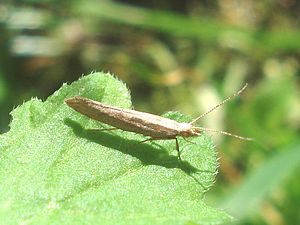Important Implications for Global Pest-Control
The diamondback moth, Plutella xylostella, is one of the world’s most destructive crop pests. It has developed resistance to many chemical and biological pesticides, and the estimated global cost of controlling this insect is approximately US$1billion annually.
In a new article published in the open access journal BMC Genomics, researchers from Australia have identified the genes expressed when the diamondback moth is attacked by a parasitic wasp, which could have significant implications for controlling this notorious pest. Asgari and colleagues, from the University of Queensland, use transcriptome profiling to provide the first-ever comprehensive analysis of the impact of a parasitoid wasp on its host. The transcriptomic profiling datasets obtained in this study — a powerful approach with which to study parasitization — provide a basis for further research in this underexplored host-parasitoid interaction.
Diadegma semiclausum, the parasitic wasp, attacks P. xylostella by injecting its eggs into the moth larvae. The wasps then manipulate the hosts’ physiology in favour of their developing larvae by introducing secretions that contain symbiotic viruses, such as polydnavirus (PDV), into the host. PDVs suppress the hosts’ immune system and stall metabolism and development. Research so far has concentrated mainly on individual genes of PDV, in order to explore their function following parasitization, but never before has so comprehensive a profiling study been conducted.
Bookmark this page for “crop pests” and check back regularly as these articles update on a very frequent basis. The view is set to “news”. Try clicking on “video” and “2” for more articles.








